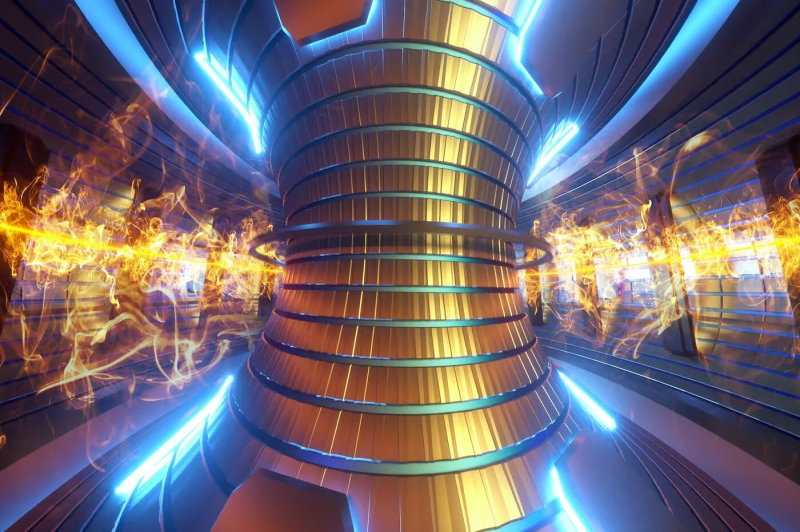
© Aliaksandr Marko/Adobe Stock
What's happening in the bowels of one of the largest nuclear fusion reactors in the world? On February 3, images were captured in the heart of the JET, located near Oxford in the United Kingdom. The video in question is more than impressive and allows a glimpse of the fusion process in full action, an extremely rare observation.
At the heart of the beast
As a reminder, the JET was the largest tokamak (magnetic plasma confinement device) until the emergence of the ITER project (International Thermonuclear Experimental Reactor) in Cadarache, France. Its construction began in 1979 and its objective is to demonstrate the scientific and technical feasibility of controlled nuclear fusion. On November 9, 1991, the very first fusion reaction between deuterium and tritium was carried out there.
Since then, several records have been recorded by JET, including a fusion nuclear energy of the order of 59 Megajoules maintained for 5 seconds on December 21, 2021.
The February 3 video was captured behind a transparent porthole, usually constructed of sapphire. The result is really breathtaking, since we can see particles spinning at very high speed within the tokamak enclosure. For electrons, this is of the order of a third of the speed of light (approximately 99,931 km/s) and nearly 1,000 km/s for the heavier cores.
You should know that capturing these images is a real challenge in itself since the core of a fusion reactor reaches the 150 million degrees Celsius, or 10 times the temperature of the Sun's core. Dizzying!
The promise of nuclear fusion
Current nuclear power plants use the fission process to produce energy. Two radically different processes:
- Nuclear fission boils down to the division of a heavy atomic nucleus into two more nuclei light, which releases a large amount of energy.
- Nuclear fusion is the reverse process, in which two light atomic nuclei join together to form a heavier nucleus. Here, the amount of energy released is much greater.
The problem with nuclear fission is that’ ;it produces a lot of waste (a real problem in France) and that it is not without risks. Meltdown of the core of a power plant, environmental contamination or irradiation of people. Even if these risks are known, strictly regulated and French power plants are regularly monitored by the ASN (Nuclear Safety Authority), zero risk does not exist.
This is why nuclear fusion is the subject of so much research; it would be safer, less fuel intensive and less polluting. The International Atomic Energy Agency (IAEA) explains: “ Fusion can generate four times more energy per kilogram of fuel than fission, and nearly 4 million times more energy than burning oil or coal.”
For now , no infrastructure is capable of maintaining fusion for more than a few seconds as the quantity of heat emitted during the process is enormous. The solution therefore lies in international collaboration to accelerate research, this is the objective of the ITER project, financed by 35 countries. A 54 billion euro project and certainly the most ambitious scientific project ever carried out by man.
- A video dated February 3 showed the core of the JET reactor.
- We can see the impressive process of nuclear fusion in full progress.
- Nuclear fusion is not yet fully mastered, due to lack of infrastructure, but it is perceived as the #8217 ;future of this energy source.
📍 To not miss any news from Presse-citron, follow us on Google News and WhatsApp.
[ ]

